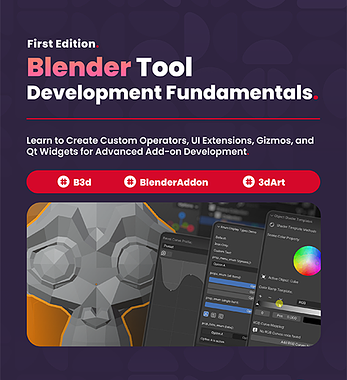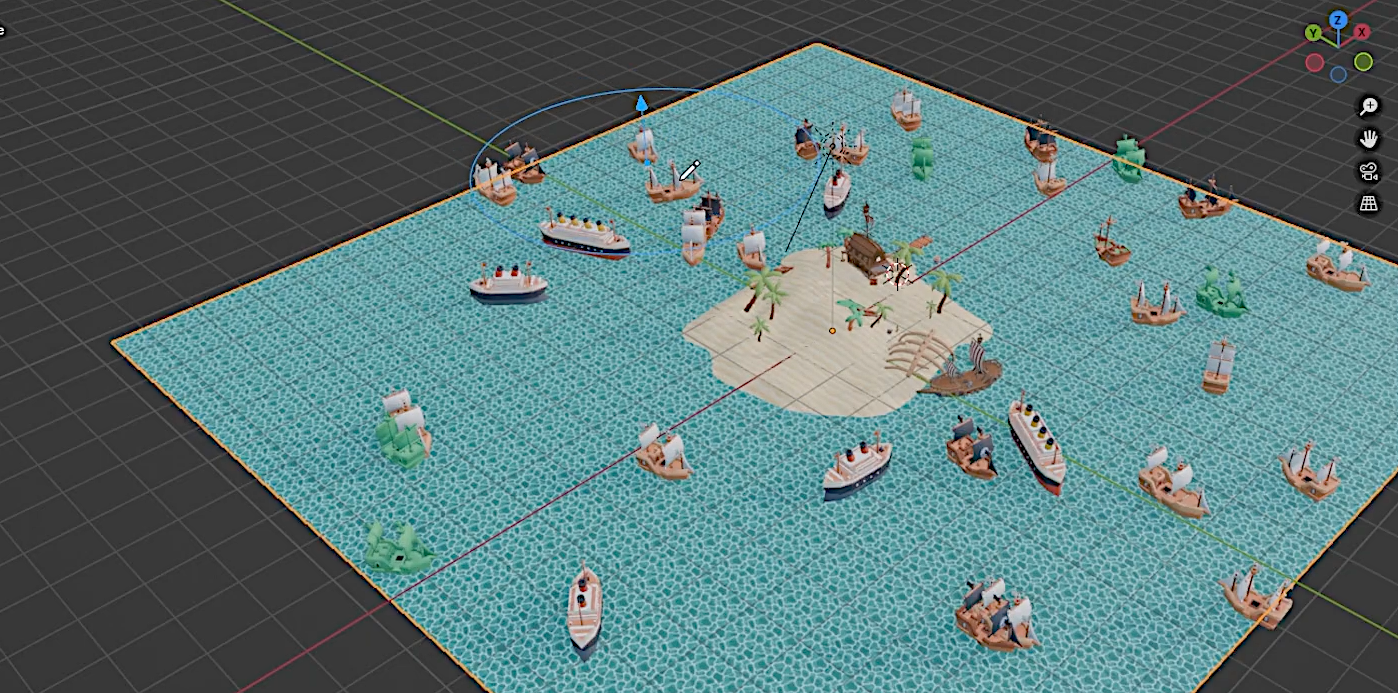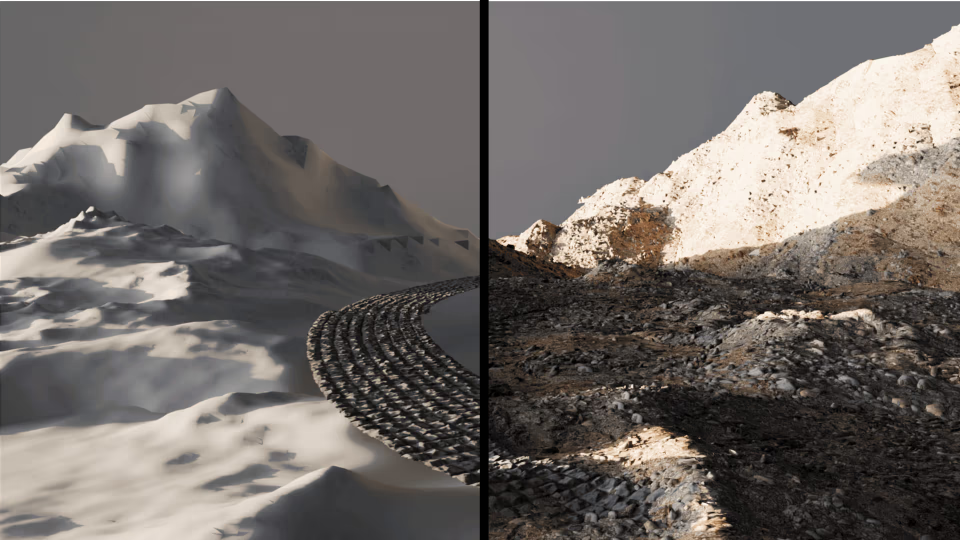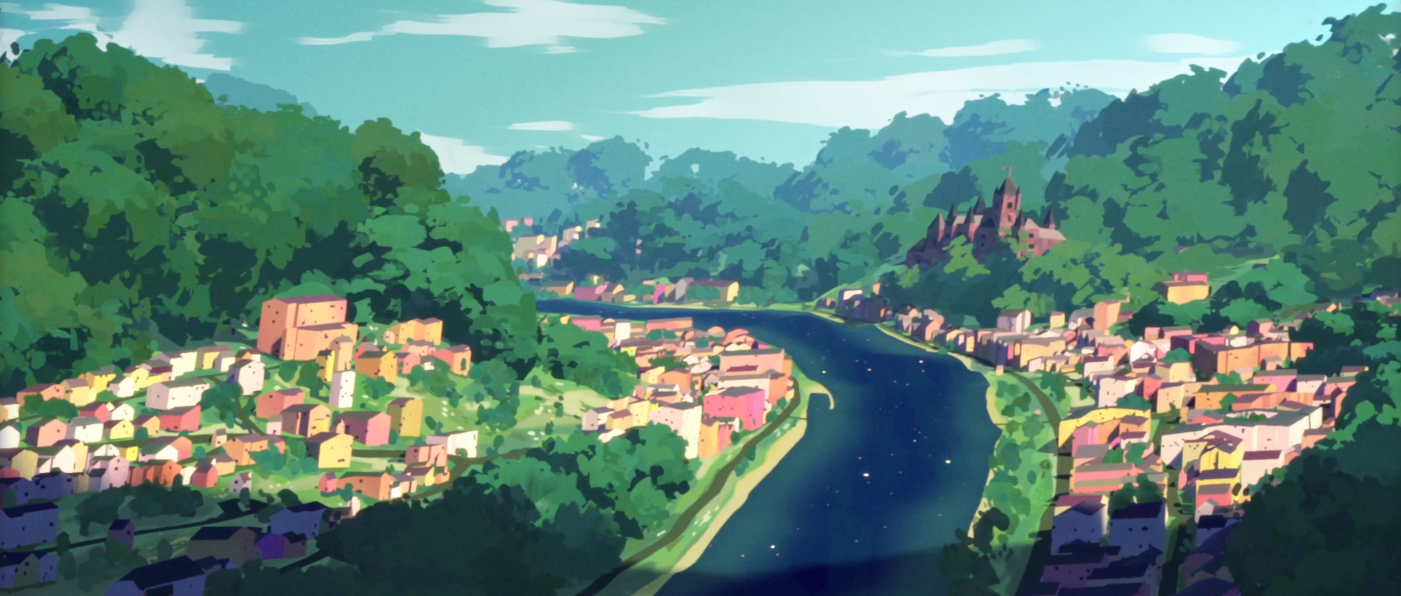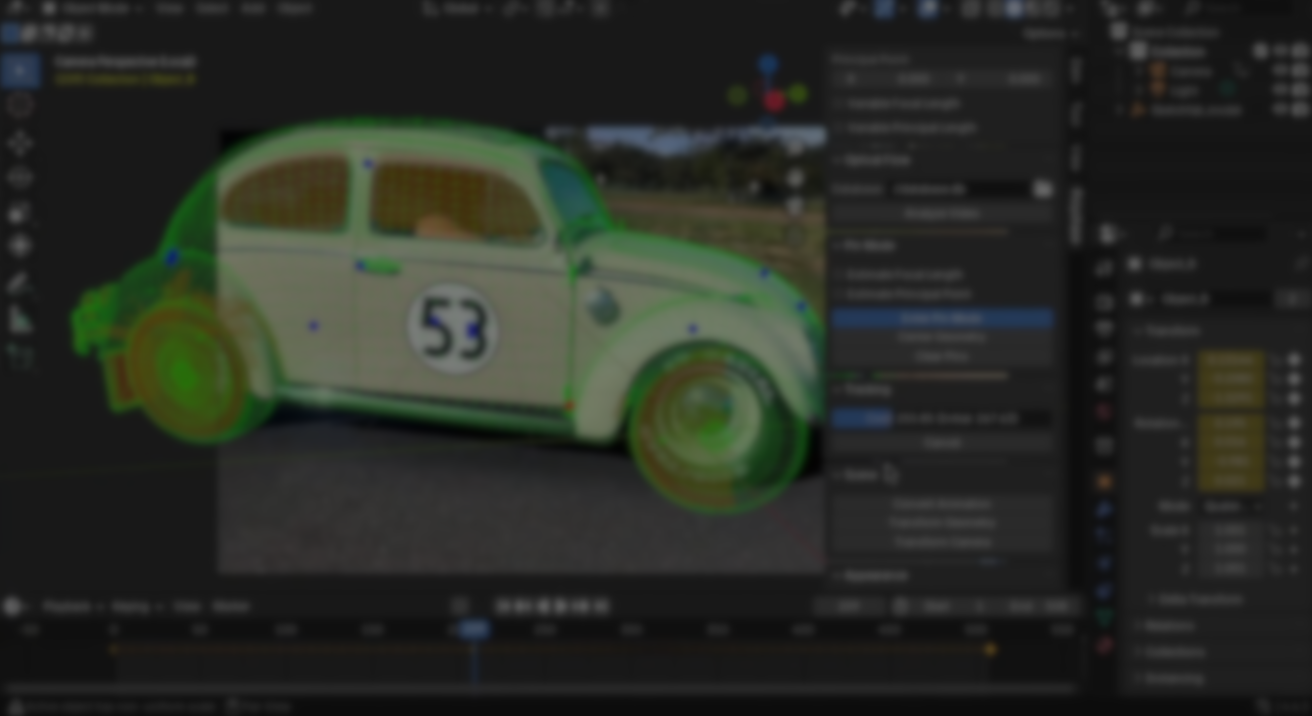
Getting 3D objects to move naturally with live-action footage has always been tricky in Blender, but a new tool aims to make the process smoother.
Today we introduce you to Polychase, a free and open-source motion tracking add-on for Blender made by Ahmed Essam, inspired by well-known tools, such as KeenTools’s GeoTracker.
Today we introduce you to Polychase, a free and open-source motion tracking add-on for Blender made by Ahmed Essam, inspired by well-known tools, such as KeenTools’s GeoTracker.
Being released later this year, Polychase is still in its early stages, but the core workflow is already functional. You can track rigid 3D meshes in video footage and have them stay locked naturally to the scene.
Main Features
Core Tracking
- 3D Pin Mode: Place and manage tracking pins directly on 3D geometry.
- Camera & Geometry Tracking: Track either the camera or rigid objects moving through 3D space.
- Trajectory Refinement: Improve tracking accuracy with bundle adjustment.
Advanced usage
- Variable Camera Parameters: Estimate focal length and principal point for more precise results.
- Keyframe Management: Full control over tracked keyframes.
- Scene Transformation: Apply transformations to entire tracked scenes.
- Animation Conversion: Switch between camera tracking and object tracking.
- Real-time Preview: See tracking progress and results as they happen.
- Mask Support: Use 3D masking for selective tracking areas.
User Interface (UI)
- Blender Integration: Works natively with Blender’s panels and operators.
- Visual Feedback: Color-coded pins, wireframes, and progress indicators keep everything clear.
- Custom Appearance: Adjust pin colors, sizes, and wireframe styles for better visibility.
🎥 The author also shared a demo video showcasing Polychase in action, along with a short coding session series documenting its development.
You can find the open-source code for Polychase on GitHub, while its documentation and changelog are available on the Blender Add-on page shared below.
Similar & Useful Alternatives
- Auto-tracking – This Blender extension adds a simple toolbar in the tracking viewport that automates detecting features and tracking them forward. It’s especially useful for footage without dedicated tracking markers, since it speeds up the first steps of Blender’s built-in tracker.
Difference: While it accelerates standard 2D/feature tracking, it doesn’t provide geometry-based pinning, optical flow analysis, or trajectory refinement like Polychase. - CameraTracker v3 – A commercial add-on that aims to replace Blender’s default solver with a more advanced, fully automated solution. It supports zooming shots, dense point cloud reconstruction, robust long-frame tracking, automatic rotomation, undistortion, and object/camera inversion.
Difference: CameraTracker excels at automated and large-scale camera solves, but it’s not open-source and doesn’t focus on mesh-based object tracking inside video like Polychase does. - Uberi / MotionTracking – This experimental add-on extends Blender’s tracking by combining 2D tracks from multiple cameras into a single 3D motion solve. By merging tracks from different angles, it can reconstruct scenes with higher accuracy, useful for rigs, greenscreen, and complex setups.
Difference: Uberi’s approach is tailored to multi-camera workflows, whereas Polychase works on single video footage but adds unique features like 3D pins, optical flow, and geometry tracking.
✨ You can get Polychase for free in Blender Extensions.
📘 Want to build your own Blender tools? Check out Blender Tool Development Fundamentals, a complete guide to creating custom operators, UI extensions, gizmos, and Qt widgets for advanced add-on development.
📘 Want to build your own Blender tools? Check out Blender Tool Development Fundamentals, a complete guide to creating custom operators, UI extensions, gizmos, and Qt widgets for advanced add-on development.

